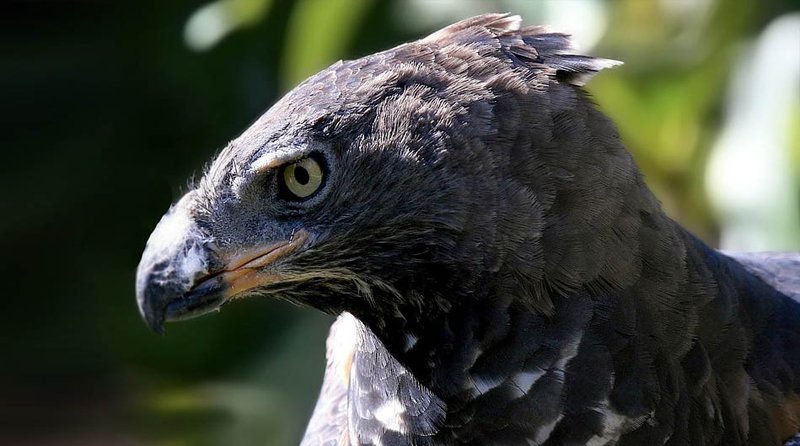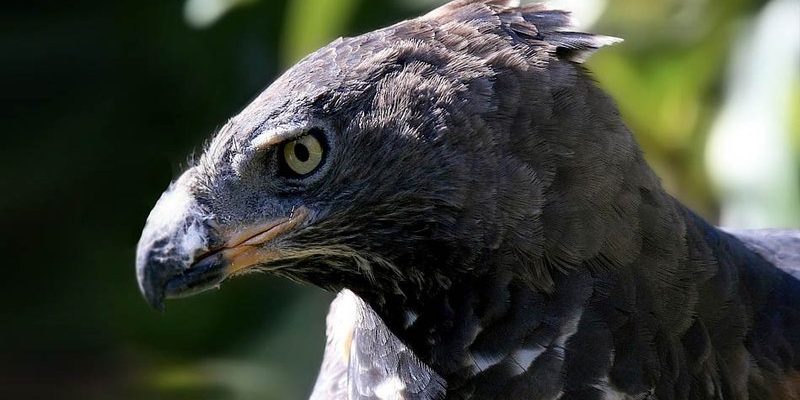
Now, you might wonder, what makes the crowned eagle so special? Thinking about its evolution and history can help us understand why it stands out among other birds of prey. From its ancestral roots to how it adapted over time, the crowned eagle’s journey is a tale of survival, adaptation, and beauty. Let’s dive into this rich history and explore the story of the crowned eagle together.
Origins of the Crowned Eagle
The crowned eagle, scientifically known as *Stephanoaetus coronatus*, has a lineage that stretches far back in time. This majestic bird belongs to the Accipitridae family, which includes other eagles, hawks, and kites. It’s fascinating to think about how these birds evolved alongside other species, adapting to their environments in ways that set them apart. The crowned eagle is thought to have originated in Africa, with its ancestors eventually migrating and diversifying across various ecological niches.
These early eagles were highly adaptive, which allowed them to thrive in a range of habitats. From dense rainforests to open savannahs, they found ways to survive and reproduce. Over time, they developed unique features that suit their predatory lifestyle. For instance, their powerful talons are designed for gripping and killing prey, while their impressive eyesight enables them to spot movement from great distances.
Interestingly, the crowned eagle has been linked to ancient cultures in Africa. Some tribes regarded this eagle as a symbol of power and nobility, often featuring it in their folklore and art. This connection to human culture adds another layer of depth to the crowned eagle’s history, emphasizing its significance beyond the natural world.
Physical Characteristics
If you were to spot a crowned eagle in the wild, you’d likely be struck by its striking appearance. With a distinctive crown of feathers on its head, this bird is hard to miss. Its plumage varies from dark brown to almost black, while its underparts are adorned with white streaks. The contrast creates a dramatic look, making it one of the most visually stunning raptors around.
In terms of size, the crowned eagle is known to be one of the larger eagles in Africa. Males typically weigh between 3-4.5 kilograms, while females can reach up to 6.5 kilograms. Their wingspan can stretch impressively, up to 2.2 meters. Just imagine that soaring overhead! Their size, coupled with their majestic presence, helps them dominate their habitat and instills a sense of awe in anyone lucky enough to witness them in flight.
Another fascinating aspect of their physical traits is their incredible talons. These powerful tools are adapted to capture and hold onto their prey, which often includes monkeys and small antelopes. Their beaks are also uniquely shaped for tearing flesh, allowing them to consume their meals efficiently. It’s like they are nature’s ultimate hunters, perfectly crafted for survival.
Habitat and Range
The crowned eagle primarily inhabits dense forests across sub-Saharan Africa. They prefer areas with tall trees that provide ample perching opportunities and a good vantage point for spotting prey. This preference for dense vegetation is quite strategic, as it allows them to launch surprise attacks on unsuspecting animals below.
From the lush rainforests of the Congo to the woodlands of southern Africa, these eagles have adapted to various habitats. However, their reliance on dense forest means that they can be particularly vulnerable to habitat destruction. Deforestation and urban expansion threaten their living spaces, posing risks to their populations.
Despite these challenges, crowned eagles have a fairly wide range. They’ve been spotted in countries like Kenya, Zimbabwe, and Tanzania. However, their populations can vary widely within these regions, sometimes requiring conservation efforts to ensure their survival. It’s a reminder that the majestic crowned eagle is not just a symbol of beauty; it’s also a species that needs our attention to thrive.
Behavior and Hunting Techniques
When it comes to hunting, crowned eagles are experts. They’re not your average bird of prey; they employ a strategic approach that’s fascinating to study. Typically, they hunt alone or in pairs, using their keen eyesight to locate potential meals. Once they spot something, they swoop down from their perch with incredible speed and agility.
One of the coolest things about crowned eagles is their ability to tackle surprisingly large prey. They often hunt monkeys, that’s right! Picture a powerful eagle swooping down and capturing a monkey. It’s a testament to their prowess as predators, showcasing their strength and hunting skills.
They also display unique behaviors during the hunting process. For instance, crowned eagles tend to use a technique called “surprise diving.” They remain hidden among the foliage, waiting for the perfect moment to strike. This tactic not only ensures a successful hunt but also minimizes the chances of alerting nearby prey. Talk about patience!
Reproduction and Lifespan
Crowned eagles are monogamous, often pairing for life. This commitment is quite admirable in the animal kingdom. The mating season typically occurs between September and December. During this time, the male performs impressive aerial displays to woo the female—think of swooping and diving in a spectacular show of strength.
After mating, the female lays one to two eggs in a large nest made of sticks and branches, often positioned high in tall trees. Both parents play a role in incubating the eggs, which usually hatch within 45 to 50 days. Once the chicks emerge, they require attentive care and feeding, as they rely heavily on their parents for survival during their early months.
As for lifespan, crowned eagles can live up to 20 years in the wild, sometimes even longer in captivity. This longevity ensures that they have ample time to pass down their hunting skills and wisdom to the next generation, continuing the cycle of life.
Conservation Status and Efforts
The crowned eagle faces threats from habitat loss, poaching, and conflicts with humans. As deforestation continues to encroach on their habitats, their numbers suffer. Conservation organizations are recognizing the urgency of protecting these magnificent birds. Initiatives include habitat preservation, education about the importance of biodiversity, and promoting sustainable practices in areas where crowned eagles reside.
Many parks and reserves have been established to protect their habitats, providing safe environments for these eagles to thrive. Community engagement is also vital; educating locals about the crowned eagle can help foster respect for this incredible species. By understanding their ecological role, communities can learn to coexist with these birds rather than viewing them as threats.
Ultimately, protecting the crowned eagle is about more than saving a species. It’s about preserving the ecological balance within its habitat and ensuring future generations can witness the beauty of these magnificent creatures soaring through the skies.
The Cultural Significance of the Crowned Eagle
Throughout history, the crowned eagle has held an esteemed place in various cultures across Africa. Its regal appearance and powerful presence have made it a symbol of power, nobility, and freedom. Many indigenous tribes have incorporated the crowned eagle into their folklore and art, using its image to represent strength and courage.
In some cultures, the crowned eagle is revered as a guardian spirit, believed to offer protection and guidance. Their majestic flight and hunting prowess inspire awe and admiration, making them more than just a bird; they are a symbol of resilience and tenacity.
As we celebrate the crowned eagle, it’s essential to recognize its role in our cultural narratives. By understanding their significance, we can appreciate the connection between nature and human culture, fostering a deeper respect for the world we share.
The evolution and history of the crowned eagle remind us of the incredible journeys that species undergo over time. From their fascinating origins to their impressive adaptations, crowned eagles are not just birds; they’re a testament to the beauty and complexity of the natural world. As we uncover their story, we also uncover the importance of protecting these magnificent creatures and their habitats.
So, the next time you think about wildlife, take a moment to appreciate the crowned eagle. Whether soaring high in the sky or perched majestically in a tree, these birds are a true marvel of nature, deserving of our respect and protection. Each step we take to safeguard their future contributes not just to their survival but to the richness of the ecosystems they inhabit. Here’s to celebrating the crowned eagle—may it continue to soar for generations to come!

